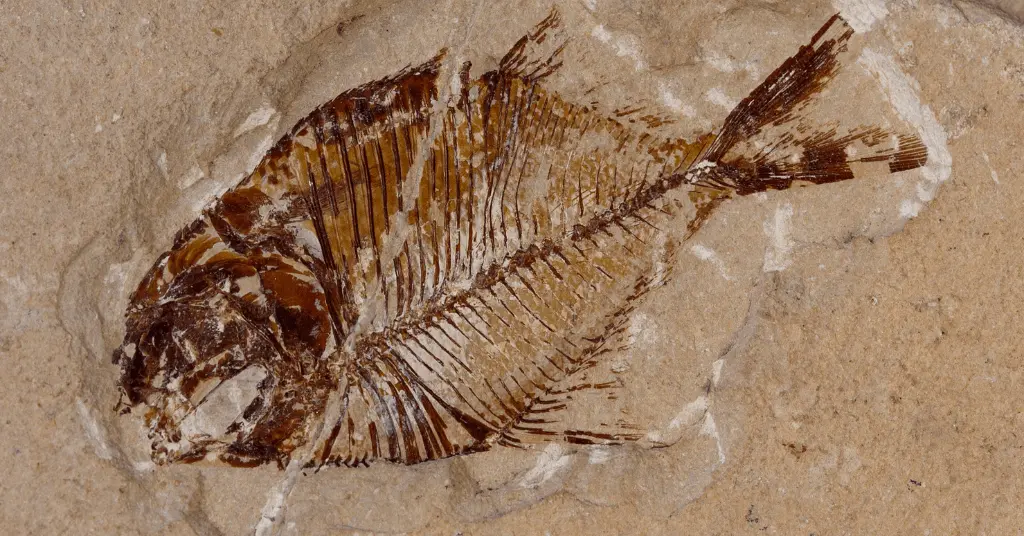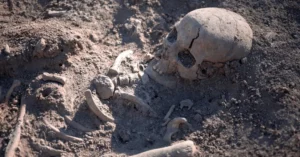AI Answer Evaluation Platform Live Now. Try Free Answer Evaluation Now
Paleoarchaeology
Paleoarchaeology is the study of fossil remains from about 7,000,000 to 10,000 years ago. The word originates from Greek ‘arkhaios’ and ‘palaios’, which both mean old or ancient. The discipline mainly focuses on fossilised hominin material however, some paleoarchaeology labs also study associated mammalian, reptilian and avian fossils to taxonomically identify and comparatively analyse for archaeological research.[1] Due to its time scale, the discipline is also sometimes referred to as ‘palaeolithic archaeology’.

Palaeontology supplements archaeological data by inferring past ecological conditions, geological landscapes and (rarely) fossilised artifacts that past-humans may have manufactured and used. However, generally both disciplines are agreed to possess starkly differing goals.
Most courses related to paleoarchaeology offer integrated biological and archaeological training which helps pursue evolutionary as well as cultural research. It helps identify geographical and geological markers of past human adaptation.
Foundation of the Study
Early interest in paleo-cultural material emerged with the lithic finds at Somme valley in France and Olduvai Gorge in Tanzania. Paleoanthropological discoveries were marked by a host of different hominin ancestral species like Australopithecus africanus by Raymond Dart in 1924, Homo habilis by the Leakey family in 1960 and the ‘Lucy’ skeleton (Australopithecus afarensis) by Donald Johanson in 1973.
Since the 1960s with works by ‘processualism’ archaeologists like Lewis Binford, the discipline took on a multifarious approach including linguistic, anthropological and cognitive analysis in understanding fossil remains.[2]
With focus on the taxonomy of fossils, their cranial capacity, anatomical structure and landscape context, paleoarchaeological research could paint a vivid picture about ancestral hominins and their activity in the stone age.
Ardipithecus ramidus
For the purpose of highlighting the scope, objectives and importance of paleoarchaeology, let us consider a case study of one of the recent finds. Discovered in the Afar region of Ethiopia by Tim D. White in 1994, the Ardipithecus ramidus fossil originated 4.4 million years ago and represents 110 specimens from 35 individuals.[3]
Based on its physical features, the ardipithecus ramidus was an occasional biped, walking on two legs, standing upright but also possessing the ability to use four limbs in arboreal environments. Its cranial capacity was 300-350cc, resembling modern chimpanzees or bonobos. Additionally, based on cognitive research on primates, the ardipithecus ramidus utilised twigs, sticks and stones to obtain food just like chimpanzees.
Using isotope studies on teeth, scientists have suggested that they may have consumed woodland trees rather than grassland species.[4] This in turn suggests a moist ecology harbouring fig, palm and hackberry trees along with shrews, bats, rodent species as cohabitors.
The position of the descended larynx indicates an enhanced vocal ability which suggests some form of vocalisation and consequent social behaviour.[5]
In such a way paleo archaeology can have multiple parameters to conduct effective studies on fossilised assemblages. This showcases a holistic approach with a broad scope in understanding ancestral hominin adaptation, behaviour and cognition.
Limitations of Paleoarchaeology
- Fossilization is an uncommon phenomena that can occur only under specific conditions, in certain areas and over long periods of time. As a result the potentiality rate of fossil finds is low in most sites.
- Paleo archaeology has to deal with limited or incomplete assemblages which can be problematic for identification and classification.
- Paleo archaeology remains one of the least well-defined disciplines due to its confusing position between paleoanthropology and paleoarchaeology.
- Recently scholars have used paleoarchaeology to point to the conflicting areas of conceptual research with culture-historical approach of the stone age on one side and the multidisciplinary scientific processualism on the other.[2]
- Additionally, paleo archaeology reflects the challenges of paleoanthropology in lack of fund allocations, conflict of interest between foreign researchers and local departments, lack of resources and logistical issues for excavations.
References
[1] https://campuspress.yale.edu/jcthompson/paleoarchaeology-lab/
[2] Chang, Yoosoo; Kim, Bo-Kyoung; Cho, Juhee; Guallar, Eliseo; Ryu, Seungho (2013). PROBLEMS AND PROSPECTS in the Practice of Paleoarchaeology in Jordan. Near Eastern Archaeology, 76(4), 196–203. doi:10.5615/neareastarch.76.4.0196
[3] White, T. D.; Suwa, G.; Asfaw, B. (1994). “Australopithecus ramidus, a new species of early hominid from Aramis, Ethiopia” (PDF). Nature. 371 (6495): 306–312. Bibcode:1994Natur.371..306W. doi:10.1038/371306a0. PMID 8090200. S2CID 4347140. Archived from the original (PDF) on 2013-04-13.
[4] Suwa, G.; Kono, R. T.; Simpson, S. W.; Asfaw, B.; Lovejoy, C. O.; White, T. D.; et al. (2009). “Paleobiological implications of the Ardipithecus ramidus dentition” (PDF). Science. 326 (5949): 69, 94–99. Bibcode:2009Sci…326…94S. doi:10.1126/science.1175824. PMID 19810195. S2CID 3744438.
[5] Clark, G.; Henneberg, M. (2017). “Ardipithecus ramidus and the evolution of language and singing: An early origin for hominin vocal capability”. Homo. 68 (2): 101–121. doi:10.1016/j.jchb.2017.03.001. PMID 28363458.




